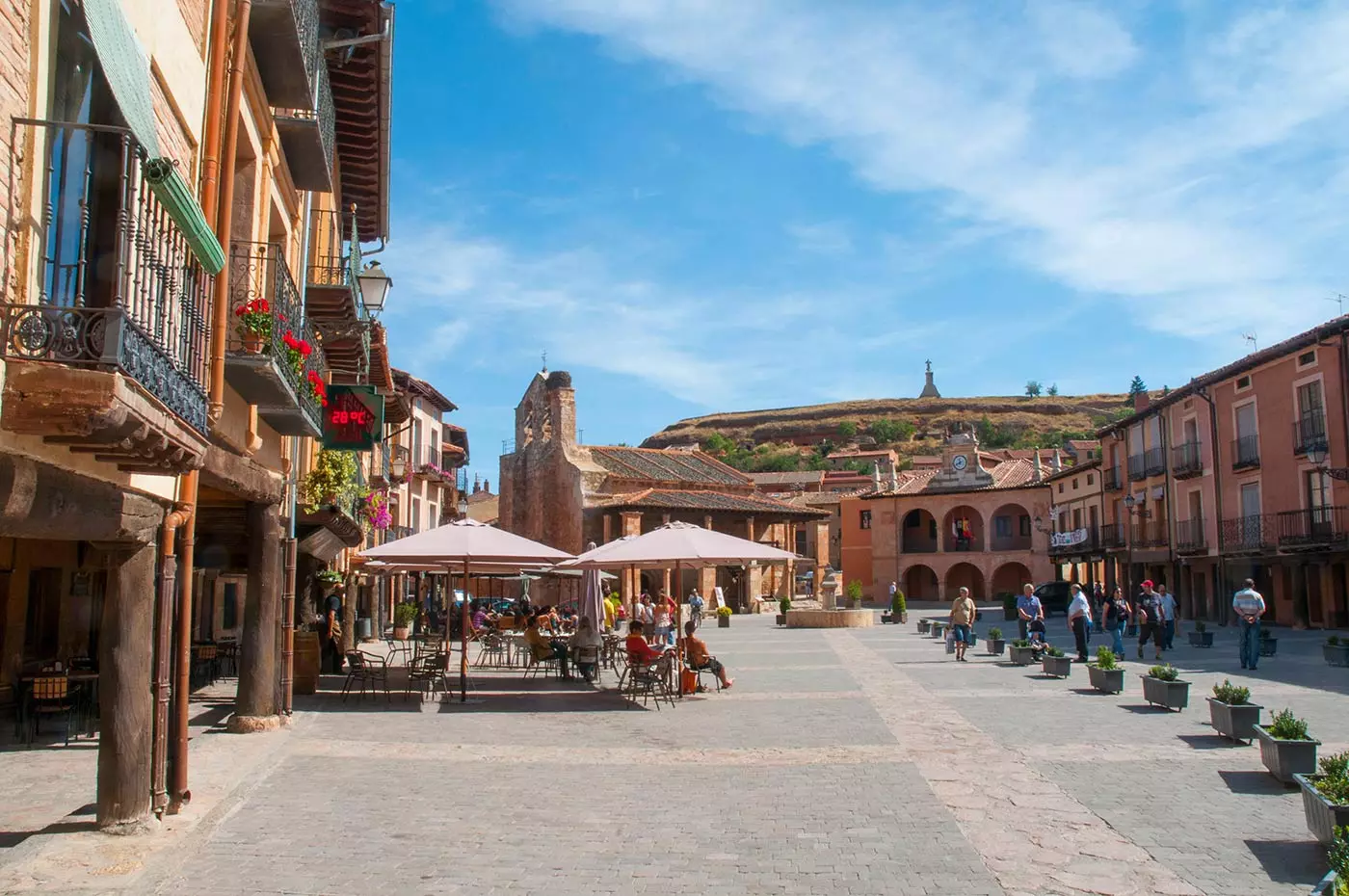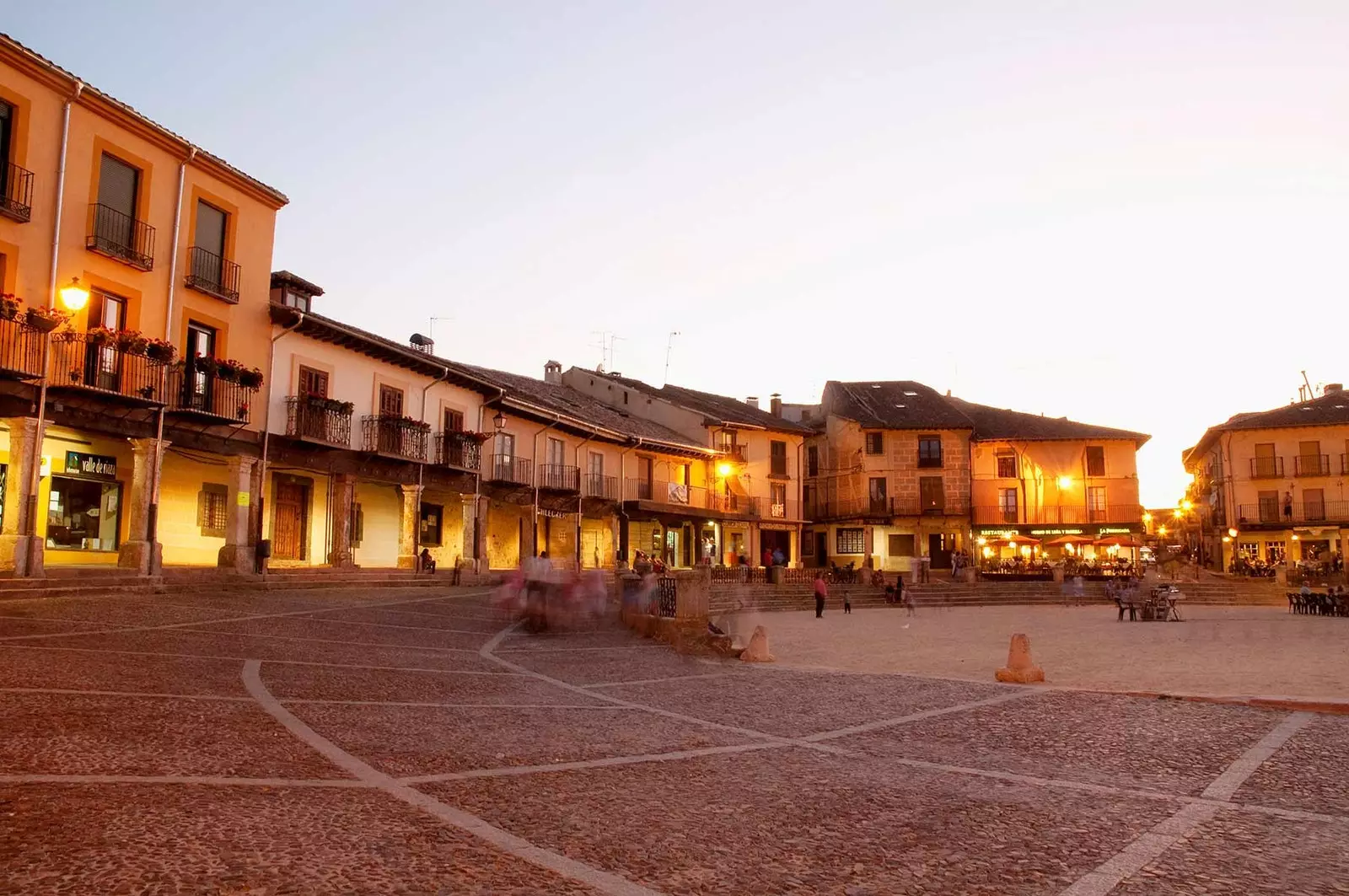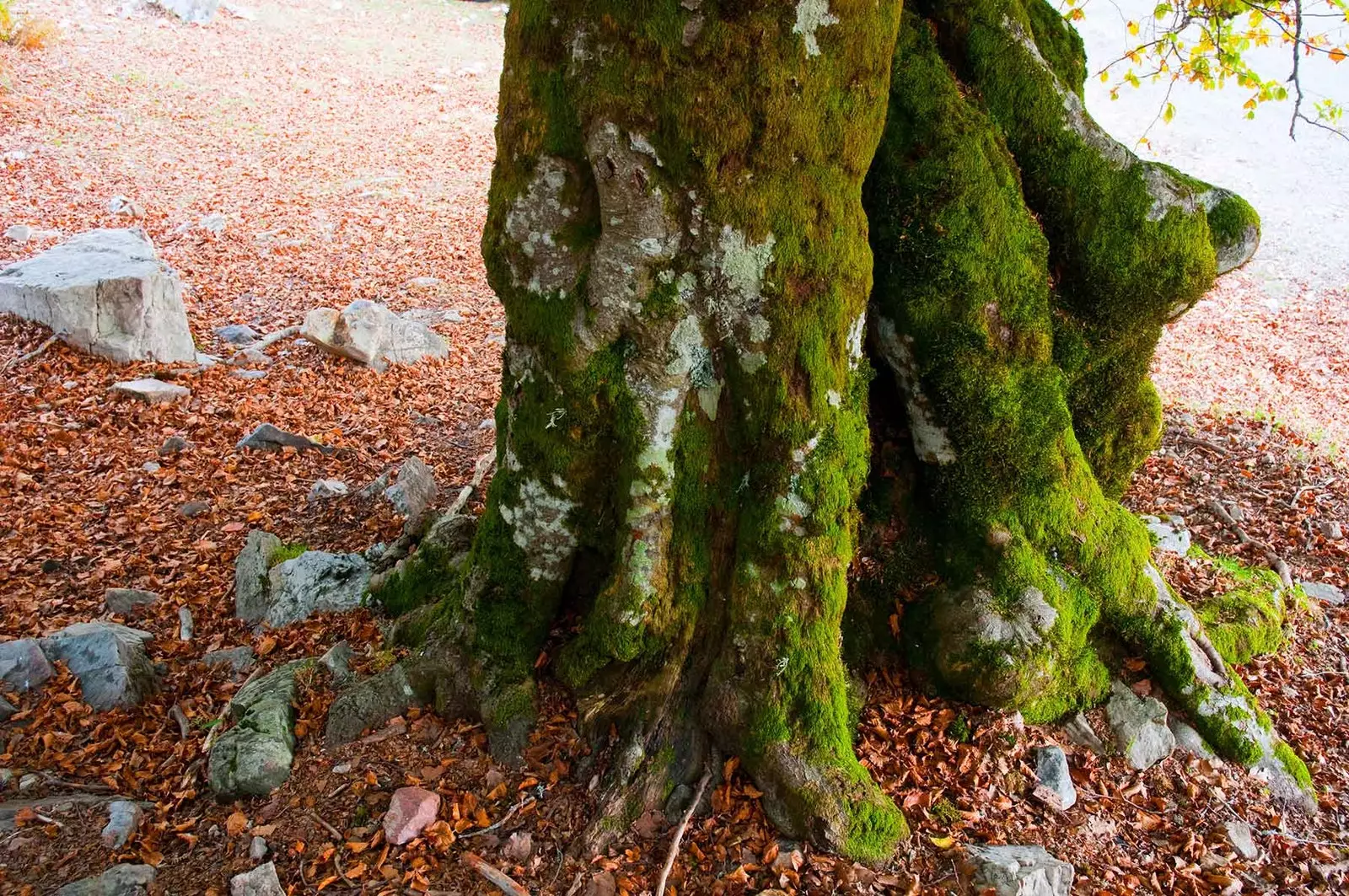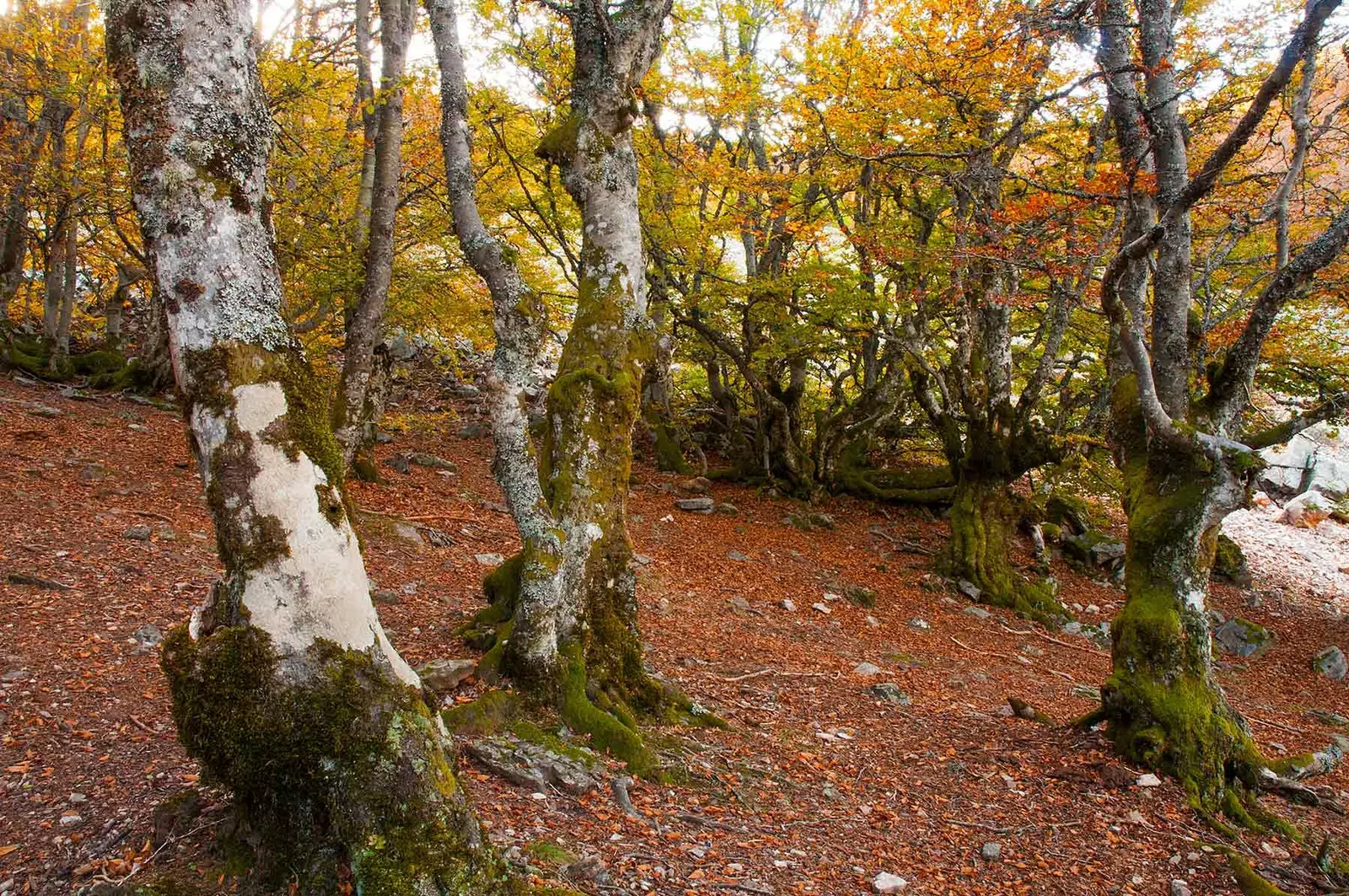
Ayllón, your weekend getaway
AYLLÓN, MEDIEVAL TOWN
We start our route in this medieval town of celtiberian origin . As soon as we pass the arch that there is after crossing the Aguisejo river bridge, we will discover the magical corners that its urban center hides: the Palace of the Contreras , the majestic Main Square (ideal to have a few beers or pay our first homage at the Avenida Restaurant), the San Miguel's Church ... Moving away from the center we will see places that are just as interesting as the Romanesque hermitage of San Nicolás , the tower of La Martina (belonging to the old Church of San Martín del Castillo) or the so-called Paredones, remains of rammed earth walls of Arab origin.
Barely seven kilometers away is the neglected village of Ayllón Caves , with just 18 inhabitants according to the 2010 census and, like so many other border towns, immersed in a constant change of jurisdiction that currently places it as belonging to Montejo de Tiermes , province of Soria . There we can forget about the world strolling among its white dovecots, in contrast to its red clayey lands, and its vultures, lodged in the vertical walls of the rock and betrayed by the white of the stools.

Rooftops of Ayllón
THE DESERT BLACK TOWNS
accessing from Burrow we moved to the very , first of the black towns of Segovia on our route. Lost on the north slope of the Sierra de Ayllón , and like the nearby black towns of Guadalajara , owe their name to the slate used in the construction of their houses, which gives the architectural ensemble a characteristic blackness. The rehabilitation of the town is partial , so we will find half of their homes in a state of abandonment ( its population is 12 inhabitants, according to the 2016 census ) .
Even more depopulated, and all of them districts of Riaza, we will discover the other two black Segovian towns: Serracin , with 10 registered inhabitants, and Calf , with 9. As a curious fact, it should be noted that both in the very As in Serracín, the churches have been built with red clay in contrast to the rest of the buildings, which exhibit their characteristic jet-black hue. The authenticity of its streets contrasts with the nostalgic feeling that his life will not survive another generation, adding to the list of abandoned towns in the area such as El Bustar, Pinarejo, La Hiruelilla, Hontanares or Villacadima.

Plaza Mayor of Riaza
THE STRIKING RED VILLAGES
We return to Burrow , the most representative population of the red towns, which also owe their name to the color of their architecture, tinted in this case by native clay and reddish stone. Used in the construction of buildings and pavements, their high iron content gives the landscape an appearance worthy of Mars. The Church of San Pedro Apostol , built in the 18th century on a previous temple, also presents the colored motifs on its façade. In the outskirts of the town we can discover a spring of ferruginous waters , as well as the remains of an old kaolin mine.
Like the black towns, the red towns are currently districts of Riaza, as is the case of our next destination: Villacorta , where we will find the central church of Santa Catalina . If we move away from the town following the Villacortilla river basin we will see the Hermitages of San Roque and the Eternal Father (this one already belonging to the municipality of Estenbanvela), with a peaceful rest area.
We follow in Martin Munoz de Ayllon , where the red of the walls contrasts with the black of the slate of its roofs, extracted from its old quarries. The church of San Martín de Tours was rebuilt in 2001 after it collapsed in 1994. If we feel like walking, we must go up to the Hill of the Goats (1826 m altitude), with impressive panoramic views of the region. The red part of the route ends in Alquité, on the outskirts of which stands its **Romanesque church (12th century)** deeply reformed over time, from where we can also see priceless landscapes of the mountains.

La Pedrosa beech forest
RIAZA, SPORTS AREA
The urban center of Riaza presents a modest and rustic beauty that quickly enters the eyes. The epicenter is its old bullring, currently relegated to the town square and surrounded by the church and the town hall. The ground floor of its buildings house all kinds of shops and restaurants , such as the hidden Casa Pastor , which also offers the possibility of staying in its hotel. A five-minute walk away and if the weather allows it, The Stove it can also attend to our gastronomic needs on its spacious terrace. Although if our accommodation allows barbecue, the option of stocking up on local products in their butchers and bakeries is just as valid. Between Riaza and the A-1, many choose to take the N-110 towards the ski resort of The Pinilla , located in the municipality of Cerezo de Arriba and equipped with all the necessary services for snow lovers.
We conclude the route in Riofrio of Riaza , which at 1,312 meters above sea level can boast of being the highest town in Segovia. In addition to its church dedicated to Saint Martin the Archangel and its rural house, we can enjoy in just fifteen minutes of walking the Riofrio reservoir , which catches the Riaza river shortly after his birth. Many are the mountaineers who leave the car parked on its outskirts to spend the night in the breadth of its mountains. If we take ours and continue along the SG-112 we will soon find the La Pedrosa beech forest , a good place to get lost among its trees. Shortly after we meet the Cheese Port (1,710 meters), where it is possible to find snow while we enjoy the panoramic views of the region. Meters later we enter the province of Guadalajara towards the Black Weaver But that, friends, is another story.

Pure magic...
